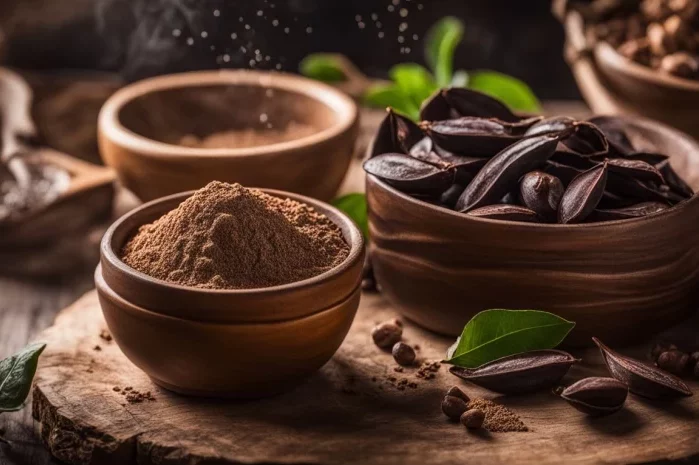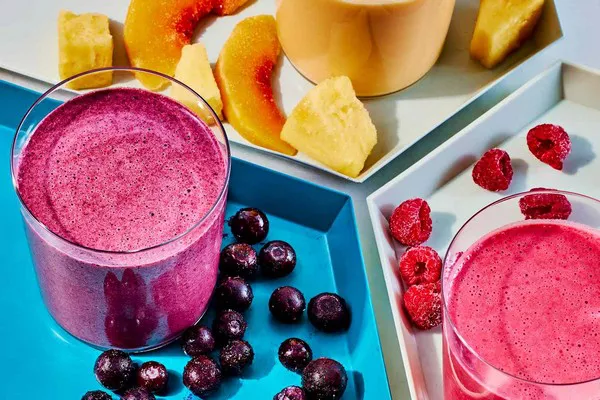In the world of culinary delights and health-conscious consumers, cacao and cocoa are often confused or used interchangeably. However, these two products are distinct in their processing methods, nutritional profiles, and culinary applications. Understanding the differences between raw cacao and cocoa powder is essential for making informed choices, whether you’re a chef experimenting with new recipes or a health enthusiast seeking the best nutritional options.
The Source: Cacao and Cocoa
Let’s start by clarifying the source of these products. Both raw cacao and cocoa powder originate from the seeds of the Theobroma cacao tree. The tree produces large pods containing cacao beans, which are harvested for chocolate production. The beans are extracted from these pods, fermented, dried, and then processed into cacao and cocoa products.
1. Raw Cacao: Raw cacao refers to minimally processed cacao beans or nibs. These are obtained by cold-pressing unroasted cacao beans, which helps retain the living enzymes and nutritional content of the cacao.
2. Cocoa Powder: Cocoa powder is produced by roasting cacao beans at high temperatures, which separates the cacao butter from the solid cacao mass. The resulting product is then ground into a fine powder.
Processing and Nutritional Differences
The key variance between raw cacao and cocoa powder lies in their processing methods and resulting nutritional compositions.
1. Nutritional Composition:
Raw cacao is considered more nutrient-dense compared to cocoa powder. This is because the processing of cocoa powder involves high heat, which can degrade some of the heat-sensitive nutrients. Raw cacao retains higher levels of antioxidants, minerals such as magnesium and iron, and essential fatty acids like omega-6 and omega-9.
2. Antioxidant Content:
Antioxidants are compounds that help neutralize harmful free radicals in the body. Raw cacao contains a higher concentration of antioxidants than cocoa powder, as many of these antioxidants are heat-sensitive and can be lost during the roasting process.
3. Flavor and Texture:
Raw cacao has a more intense and bitter flavor profile compared to cocoa powder. Cocoa powder, due to its roasting process, tends to be milder and sweeter in taste. In terms of texture, raw cacao can be slightly grittier because it contains the natural cacao butter, whereas cocoa powder is smoother and more processed.
4. Health Benefits:
Both raw cacao and cocoa powder offer health benefits due to their antioxidant content. These benefits include improved heart health, reduced inflammation, and potential mood enhancement due to the presence of compounds like theobromine and phenylethylamine.
Culinary Uses
The choice between raw cacao and cocoa powder often depends on the culinary application and personal preference:
1. Raw Cacao:
Raw cacao is a versatile ingredient that can be used in both sweet and savory dishes. It adds depth of flavor to smoothies, desserts, energy bars, and even savory dishes like chili. Raw cacao nibs are also popular as a crunchy topping for yogurt or oatmeal.
2. Cocoa Powder:
Cocoa powder is a staple in baking and dessert-making due to its smooth texture and mild flavor. It is commonly used in cakes, brownies, cookies, and hot chocolate. Cocoa powder blends easily into liquids and is often incorporated into beverages for a rich chocolatey taste.
Which Should You Choose?
The decision between raw cacao and cocoa powder ultimately depends on your preferences and health goals:
1. For Maximum Nutrition:
If you prioritize nutritional content and antioxidants, raw cacao is the preferred choice. Incorporate raw cacao into your diet through smoothies, homemade energy balls, or as a topping for yogurt.
2. For Baking and Cooking:
Cocoa powder is ideal for baking and cooking, where its milder flavor and smooth texture complement a wide range of recipes. Use cocoa powder in cakes, cookies, and other baked goods for a classic chocolate taste.
Conclusion
In summary, raw cacao and cocoa powder are distinct products with unique qualities. Raw cacao retains more of its natural nutrients and antioxidants due to minimal processing, making it a popular choice among health enthusiasts. On the other hand, cocoa powder offers a convenient and versatile option for culinary applications, particularly in baking and dessert-making.
Whether you choose raw cacao or cocoa powder, both products can be enjoyed as part of a balanced diet. Experiment with different recipes and applications to discover which suits your taste and dietary preferences best. Ultimately, incorporating either of these chocolate derivatives can add depth and flavor to your culinary creations while providing potential health benefits. Choose wisely, and indulge responsibly!
Related Topics:


























